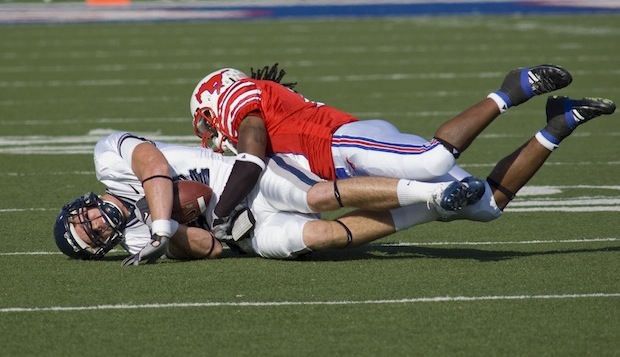When the Steelers and Patriots clash on Thursday in the football‘s season opener, you’ll see 250-pound men slam into each other, head o head, at high speed. And get concussions? There’s no easy way to tell.
That goes for young athletes, too, whose developing brains are particularly vulnerable to damage if they keep playing after getting a concussion. Sports-related brain rauma sends a quarter-million American kids to the emergency room annually , but symptoms may unfold over hours, days, or even weeks.
Researchers led by Shu Yang have created a chemical strip that changes colour on impact to measure the force of a collision. The material could be integrated in o helmets for athletes or soldiers.
There’s already a small industry try ng to develop helmet sensors and other devices to measure or prevent concussions in sports, though it hasn’t yielded breakthroughs yet.
The problem is determining what really happens to the brain on impact. “No one’s been able to predict in clinical cases how much force it actually takes to cause a concussion,” said Richard Figler, former te am physician for the Browns. Players caught off guard by a soccer ball kicked rom behind, for example, can sustain concussions from much smaller forces than so meone braced for a tackle, whose neck muscles absorb some of the blow.
The University of Pennsylvania technoogy needs research to show whether it can predict injuries, rather than just measure he force of a hit. The material relies on tiny crystals whose color is linked to their under ying shapes, not to pigmentation. When a hard blow changes the shape of the crystals he color changes as well. One challenge will be to measure the speed of an impact, because the same force can be much more damaging to neurons at higher speeds.
